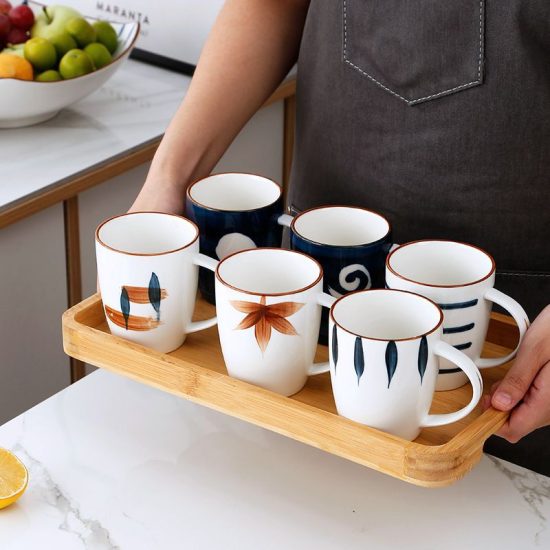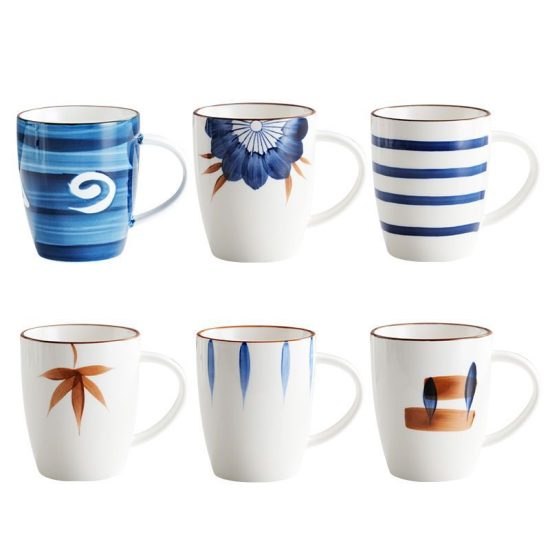Exploring unique ceramic cup glazes involves experimenting with different materials and techniques to add color and visual interest to the cups. Here are some ways to achieve unique glaze effects:
- Oxidation and Reduction Firing: The firing atmosphere can have a significant impact on the final color of the glaze. Oxidation firing involves firing the ceramic cups in an oxygen-rich environment, which typically produces brighter and more vibrant colors. Reduction firing, on the other hand, involves creating a reduction atmosphere with limited oxygen, resulting in unique, often more muted colors and even metallic effects.
- Traditional Glazes: Traditional glazes, such as those based on metal oxides, can create a wide range of colors. For example, copper oxide can produce green hues, cobalt oxide can create blues, and iron oxide can result in warm earthy tones. By experimenting with different ratios and combinations of these oxides, you can achieve various color effects.
- Overlapping Glazes: Layering different glazes on top of each other can lead to intriguing color interactions. When two or more glazes are applied and fired together, they can mix, blend, or create distinct patterns, resulting in unique color combinations and surface effects.
- Crystalline Glazes: Crystalline glazes produce beautiful crystal formations on the surface of ceramic cups. These glazes contain high amounts of zinc or titanium and require controlled cooling during the firing process to encourage crystal growth. The crystals can range in color and form intricate patterns, adding a mesmerizing touch to the cups.
- Raku Firing: Raku firing is a Japanese technique that involves removing pieces from the kiln while they are still glowing hot and then rapidly cooling them. This rapid cooling creates a thermal shock, which can produce unique crackle patterns and iridescent metallic effects. Raku-fired cups often exhibit vibrant colors and intriguing surface textures.
- Alternative Materials: Exploring unconventional materials can also yield interesting glaze effects. For example, incorporating materials like glass shards, metal filings, or even organic materials like leaves can create unique textures and patterns when fired. These materials can melt, react, or burn away during firing, leaving behind distinct visual elements.
- Glaze Application Techniques: The way glazes are applied can also affect the final appearance. Techniques such as dipping, pouring, spraying, brushwork, or even wax resist can create different layers, textures, and color variations on the cups’ surfaces.
When exploring unique ceramic cup glazes, it’s important to keep in mind that glaze chemistry and firing conditions play a crucial role in achieving desired results. Experimentation, testing, and documentation are key to understanding how different glaze materials and techniques interact and produce specific color outcomes.


